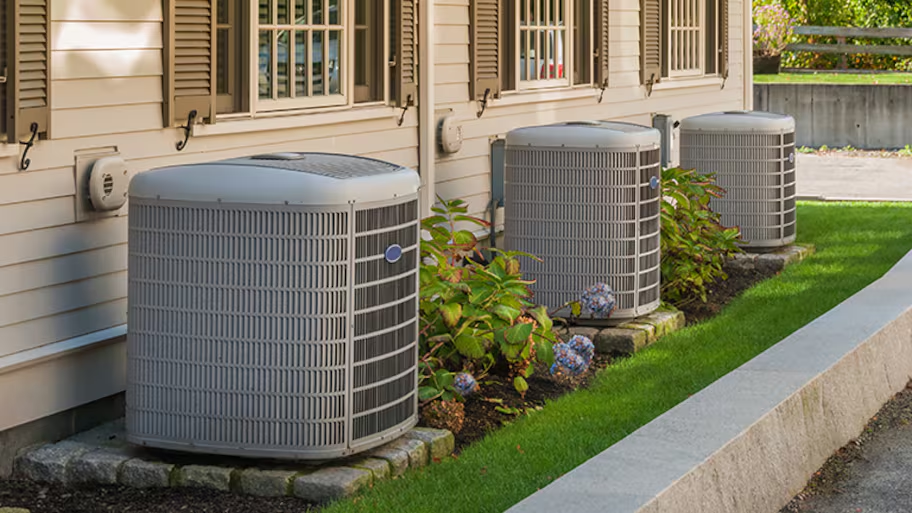
Repairing ductwork in a crawl space is frustrating and difficult, which is reflected in the cost. Learn why limited access results in a premium cost beyond just a simple increase in labor hours.
While R32 may be better for the Earth, other refrigerants may soon replace it


You’ve probably heard of R22 and R410A for air conditioning systems, but you may not have heard of R32 refrigerant. Refrigerants are liquids or gases that make the cooling power of AC units possible. Compared to other refrigerants on the market, R32 is more efficient—and therefore less expensive—and easier to recycle. Learn more about the advantages and disadvantages of this AC refrigerant in this guide.

AC refrigerant is a liquid or gas compound that powers an air conditioning system. It works by absorbing heat from the home environment and using compressors and evaporators to create cool air. This makes it more comfortable to be indoors when the weather is warm.
Refrigerant is contained inside copper coils within an AC unit. As hot air from indoors is blown over the coils, the refrigerant reacts by cooling the coils and sending that cool air back into the home. This cycle is repeated multiple times to cool a home.

R32 refrigerant is a relatively new innovation in AC technology developed as an alternative to the refrigerants used today. It is a hydrofluorocarbon, or HFC, air conditioning manufacturers are adopting as a safe, efficient, and environmentally friendly refrigerant option.
Today’s most common AC refrigerants are R22 (also called Freon) and R410A. The U.S. stopped importing and producing Freon in 2020, and AC systems made after 2010 don’t use it. R410A refrigerant is the standard in modern AC systems. R32 is one possible replacement for R410A, which has a higher Global Warming Potential (GWP) and is more difficult to recycle.
A simple way to understand GWP is as a measure of how much the refrigerant gas negatively impacts the Earth’s atmosphere. You can learn more about GWP from the Environmental Protection Agency (EPA).
R32 offers several benefits compared to Freon and R410A:
More efficient
Easier to recycle
Lower environmental impact
Less expensive to operate since R32 systems use less refrigerant
Despite its advantages, R32 refrigerant also has a few drawbacks. It is known to be mildly flammable. Also, despite being relatively environmentally friendly, it still has a fairly high GWP compared to newer refrigerants developed more recently.
You cannot switch the refrigerant in your existing AC unit. For example, a unit that uses R410A refrigerant unit cannot be transitioned to an R32 air conditioner. Additionally, refrigerants can be dangerous and should only be handled by qualified HVAC technicians with the proper training. If you’re interested in switching to an R32 capable AC system, discuss options with your local HVAC expert.
R32 is just one of many types of refrigerants in use today. You may hear about the following types when learning about different AC systems.
R12 is a type of refrigerant known as a chlorofluorocarbon, or CFC. These were discovered to contribute significantly to the greenhouse gas effect, depleting the ozone layer and harming the Earth’s atmosphere. The EPA passed regulation halting the production of R12 AC units in 1994.
R22 is a hydrochlorofluorocarbon, or HCFC. This refrigerant causes slightly less damage to the environment than CFCs like R12. However, the U.S. government mandated that HCFCs be phased out by 2020 via the Clean Air Act, so manufacturers are not producing new R22 AC units. For this reason, the cost of R22 refrigerant is significantly higher than other types.
R410A is a hydrofluorocarbon, or HFC. It’s an environmentally friendly alternative to R22—it performs very similarly to R32, but has a larger negative impact on the atmosphere.
From average costs to expert advice, get all the answers you need to get your job done.

Repairing ductwork in a crawl space is frustrating and difficult, which is reflected in the cost. Learn why limited access results in a premium cost beyond just a simple increase in labor hours.

HVAC replacement costs depend on a lot of factors, like unit type, size, and labor. See what you can expect to pay for HVAC replacement here.

When your HVAC system is acting up, it could be the blower motor to blame. See how much blower motor replacement costs and what impacts the price here.

A whole-house humidifier costs between $400 and $800, but can have an ROI of 40%. Learn if adding this HVAC appliance is worth it for you.

Is your baseboard heater not working? Here are some common issues and expert solutions for getting your heater back on track. Here’s how to troubleshoot it.

When you notice hot and cold zones in your home, it pays to learn how to balance airflow in your ducts to even out the temperature.